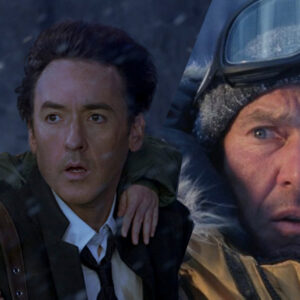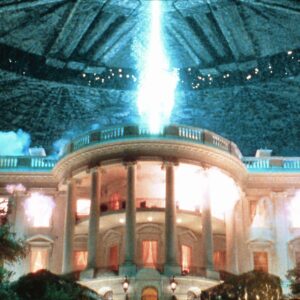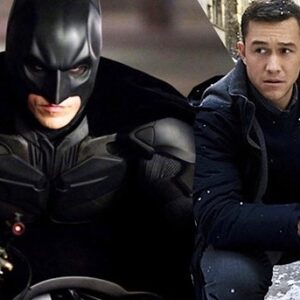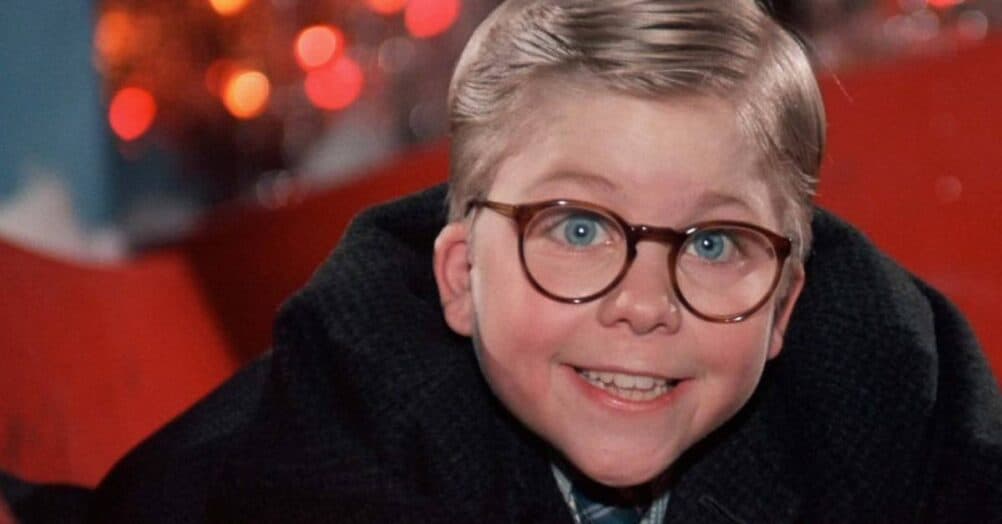Last Updated on August 5, 2021

There is a guy in one of the 52 filming units separated by drenched black cloth hanging from the roof inside LAIKA’S Oregon warehouse taking a snapshot. This guy has been moving the legs and arms of an exoskeleton puppet for the past 9 hours trying to get, at best, a second of usable footage in the can before he calls it a day. He is left alone on set with only a 7D Cannon camera and the company of a few journalists. He is one of over a hundred artists working at LAIKA studios today. He is also the CEO of the company. This is Travis Knight, “one of the best animators in the world,” insists PARANORMAN directors Chris Butler and Sam Fell. He is their boss and today they are his.

As I walked into LAIKA studios I was immediately reminded of a friend of mine who gets extremely anxious with two kinds of movies; those of the stop-motion variety and those of the David Fincher variety. The reason is because of their attention to detail: the examination, thought and precision in craft placed upon each frame. At 24 frames in each second of each shot it becomes just too much to absorb without anxious little jitters brewing inside the man. I immediatly made a mental note to warn my friend of this movie, a movie with physical production lasting over 20 months for hundreds of artists… Yeah, PARANORMAN is king shit of anxiety mountain.
Visiting LAIKA for PARANORMAN was especially cool for me on two fronts. One, I graduated from an Art Institute, therefore I carried a sense of hipster entitlement that these Portland folk were “my people”. Two, I had also visited PIXAR around the same time and experiencing both offered some interesting contrasts in the two animation companies. PIXAR studios in many ways is a Disneyland, encouraging creativity in artists with games, decorations, activities and the like. It’s a well kept play room: things are spread out, teams are separated. While it’s terribly unfair to compare a behemoth like PIXAR to a successful yet smaller studio like LAIKA, I have to say I prefer the make-shift offices, shuffled sketchbooks and sticky note doodles approach I saw at LAIKA. These are professional artists who don’t give a shit about the paint on their clothes or in their work stations when they are concentrating on the frame. These are artists I recognize and the canvas feels just as recognizable to me.

“It’s John Carpenter meets John Hughes.” says director Chris Butler, a veteran storyboard artist for THE CORPSE BRIDE and CORALINE. Chris is now spearheading PARANORMAN after turning the idea of a boy saving a town with his sixth sense into a screenplay years ago. Not an hour before Chris shared this comparison, another animator assured me the film was “George A. Romero meets John Hughes.” Before the day was over the names Dario Argento, Lucio Fulci, Mario Bava and Sam Raimi also came up… Hell yes.

Norman, Chris insists, is an autobiographical kind of protagonist. Not just for him but for all of the collaborators on the film. “Artists are gifted like Norman and sometimes it is hard to find an outlet for your gifts.” Norman, of course, is a teenager with the eerie knack for being able to speak to the dead, which comes in handy when a curse from an old witch arrives in town. What’s particularly interesting about this set up is that the movies location, the New England town of Blithe Hollow is pretty creepy to begin with. Among the 52 separate filming units, the town center is the largest. Think Alec Baldwin’s massive model in BEETLEJUICE, now triple the scale and multiply the detail by 10. “It’s pretty much a fictionalized Salem, Massachusetts,” Production Designer Nelson Lowry points out. In fact Blithe Hollow’s town center is based on a square in Salem.
And like Salem, Blithe Hollow executed a famous 16th century witch and has been desperately attempting to cash in on their historical significance ever since. Examining the main street of the town square set, I noticed the crafting of a thousand details reinforcing its history: A fast food restaurant called “Witchy Weiners” that has a sign identical to McDonald’s Golden arches only turned upside down to form an W, a bar called “Barjento’s Suspiria” and tiny newspapers with other mccabe refferences us horror aficionados will eat up.

More striking than the detail was the esthetic of the town and the puppets, which is completely unique to anything I’ve seen in stop motion, even with LAIKA. “The tone and atmosphere is skewed naturalism as opposed to CORALINE which was more theatrical.” Chris insists. While there is still theatricality present, including tulle fabric for clouds along with sets and props having a nervous line quality to the edges, intentionally made to look as if the artists themselves were terrified while creating them, there is a recognizable distinction to PARANORMAN that seperates it from the Tim Burton-esc stop motion that prefers buttons for eyeballs. It feels familiar. That is a necessary approach for the story to make the eventual real supernatural events have the proper effect on this milk-toast American town. The effect is comparable to Pinhead and his demonites wandering the chocolate and plastic laden Halloween isles of a neighborhood grocery store.
Believe it or not, this approach could not have been as effective before now. I was shown dozens of advances in stop motion that have the potential to directly aid movies in significant ways. “Animation has progressed and has gotten safe. We need to challenge ourselves.” Sam Fell, the films co-director stated. When it comes to film, I have often associated technological progress within the confines of a computer. Meaning I don’t really think of progress outside of more 1’s and 0’s spinning at a faster rate than yesterday, benefiting CGI more than anything. LAIKA, however, utilizes advancements in technology to enforce their mantra of PRACTICAL over DIGITAL. Case in point… the 3D printer.
Laika was the first studio to use a 3D printer for Stop Motion with CORALINE. Their 3D printers use liquid resin, which has a chalky, powdery consistency before going into the printer. With the help of U.V. lights, it prints out a substance 1/4 the size of human hair on top of each other hundreds of times over until you get a characters face, which is then replaced with another face every frame to create as smooth an expression as possible in a scene. Characters that touch in a shot are printed as one unit. Motion blur is printed out individually so the face will have 4 eyes and 2 noses if it is moving. It’s really fu**ing incredible….

The skin in CORALINE was purposfully simplified because their 3D printers did not print color, so artists painted the skin every time. With so many variations, it was simpler to make the skin as consistant as possible. PARANORMAN will utilize full 3D color printers, which gives them the ability to have acne heavy teenagers, wart heavy witches and scar heavy zombies. This also means a faster turnout rate, adding more expressions, even in the background. The face library has over 30,000 different faces and Norman can have more than 1.5 million expressions. They also adopted natural fibers for the hair opposed to CORALINE which used wire, you’ll even see organic goat hair on Norman’s head. Silicon is being utilized in dramatically effective ways. Alvin (Christopher Mintz-Plasse) has a completely silicon neck, which in motion looks organic as hell yet completely unique. Light behind characters silicon ears seeps through and glows a faint red like in real life. This has never been seen before.
I’ve never seen state of the art technology applied to practical effects like this before, but this is stop motion after all and outside of advancements in technology, the team does the occasional 180 and gets green. Really green. There are 1500 unique trees, all hand made recycled cardboard that would lay over a mile and a half. There are genuinly amazing artistic touches, the grass is actually glass to get the proper sheen. All of the clothing is hand stitched to bring out the line quality in the clothes.

I’m also willing to bet that PARANORMAN will have the best AND cheapest 3D studios can hope to show. Because it is shot one frame at a time and everything down to the bits of zombie saliva flinging around is practically shot with wires, GOOD 3D is a piece of cake. They simply move their 7D camera over roughly the distance from one eye to the other to capture a perfect in house 3D image, although efficient and effective, when it comes to the potential of 3D, the director of photography Tristan Oliver admitted “I don’t know where we are going with this stereoscopic stuff… we shall see…”
All of the technical shit aside, I gotta tell you, the 20 some minutes of the first act they showed us was absolutely fantastic. I’m really loving the feel of this movie. It reminds me of HOCUS POCUS (f**k you I love HOCUS POCUS) with an edge. The relationships with the kids felt natural and fun, the bullying aspect isn’t taken lightly but it doesn’t suck the humor present in almost every scene. There are dozens of genre nods along with broader pop culture references like John Carpenter’s HALLOWEEN theme as a ringtone or Neil’s FRIDAY THE 13th hockey mask scaring the crap out of Norman. More so than even the gags, it really does feel like a well constructed hero’s journey of a teenager finding his place in the world… with zombies.
The environment of LAIKA is really incredible. It is a tight community, every department is a stones throw from the next, it’s more like a live action film set than a traditional animation studio. Chris Butler was exited to describe to me Jon Brion’s enthusiasm while visiting the studio. If there was ever icing for this stop-motion genre cake, it’s JON BRION doing the music. I suggest you queue up Donovan’s SEASON OF THE WITCH on your playlist with me gearing up for AUGUST. I simply can’t wait.


























Follow the JOBLO MOVIE NETWORK
Follow us on YOUTUBE
Follow ARROW IN THE HEAD
Follow AITH on YOUTUBE